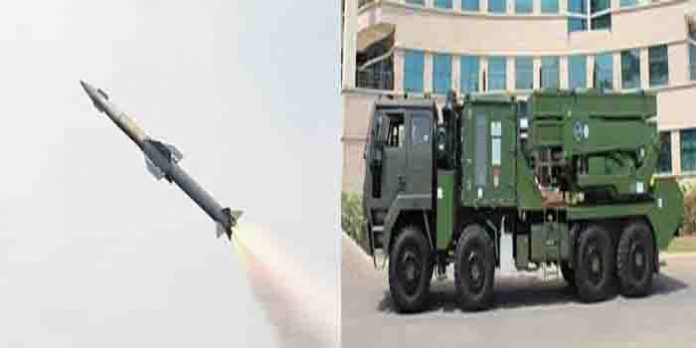India test-fired a Quick Reaction Surface to Air Missile (QRSAM) to successfully hunt down and destroy a PTA (pilotless target vehicle) from a base in Odisha. The test was conducted to strike down a high performance Jet Unmanned Aerial Target called Banshee, which simulates an aircraft. The test was conducted for a second time in four days and the missile accurately hit an airborne target and neutralised it, the defence sources said. This was conducted by the DRDO, this time proving the performance parameters of the missile warhead. The radars acquired the target from a long range and tracked it till the mission computer automatically launched the missile. Continuous guidance was provided through a radar data link, an ITR statement said. In the video released, QRSAM is launching in a cloud of smoke from the Integrated Test Range (ITR) at Chandipur at around 3.50 PM. The missile took approximately eight seconds to hit its target. Earlier trial was conducted on November 13, in which the missile had achieved a milestone direct hit on to a pilotless target aircraft at medium range and medium altitude. The system has been designed for induction into the Indian Army and has a range of 25 to 30 kilometers.
The QRSAM weapon system, which can operate on the move uses a single-stage, solid-propellant rocket and is built using indigenous subsystems. It can be deployed from mobile launchers – each of which has six missiles carried in a canister to make transportation easier – to provide on-the-go support for ground forces. Primarily designed and developed by DRDO, it is a short range Surface to Air Missile (SAM) system which can provide a protective shield to the moving armoured columns of the Army from enemy aerial attacks. This is a crucial step towards the induction of the missile system in the Indian Army. After one of its prior successful tests in December 2019, the DRDO had said that QRSAM’s developmental trials were completed with that test and the weapon system would be ready for induction by 2021.
During the test on Tuesday, the missile system radars acquired the target from a long range and tracked it till the mission computer automatically launched the missile. Guidance signals were provided throughout the path of missile through radar data link from the ground system. Missile entered the terminal active homing guidance phase and reached the target close enough for final and successful activation for the warhead. “The first in the series test of QRSAM took place on November 13 achieving the milestone of a direct hit. Second test proved the performance parameters of warhead.” said the DRDO official statement.
A number of test range instruments like radars, telemetry and electro optical sensors were deployed to capture the complete flight data and verified the performance of the missile. Teams of scientists from Armament Research and Development Establishment (ARDE) Pune, Research and Development Establishment (Engineers) Pune, Electronic and Radar Development Establishment, Bangalore, Instruments Research and Development Establishment, Dehradun and Missile Complex Laboratories from Hyderabad and Balasore participated in the test. Defence Minister Rajnath Singh congratulated the DRDO scientists on the successful flight test of QRSAM. DRDO Chairman G Satheesh Reddy congratulated all the teams that worked on the QRSAM project for the second successful test.






















